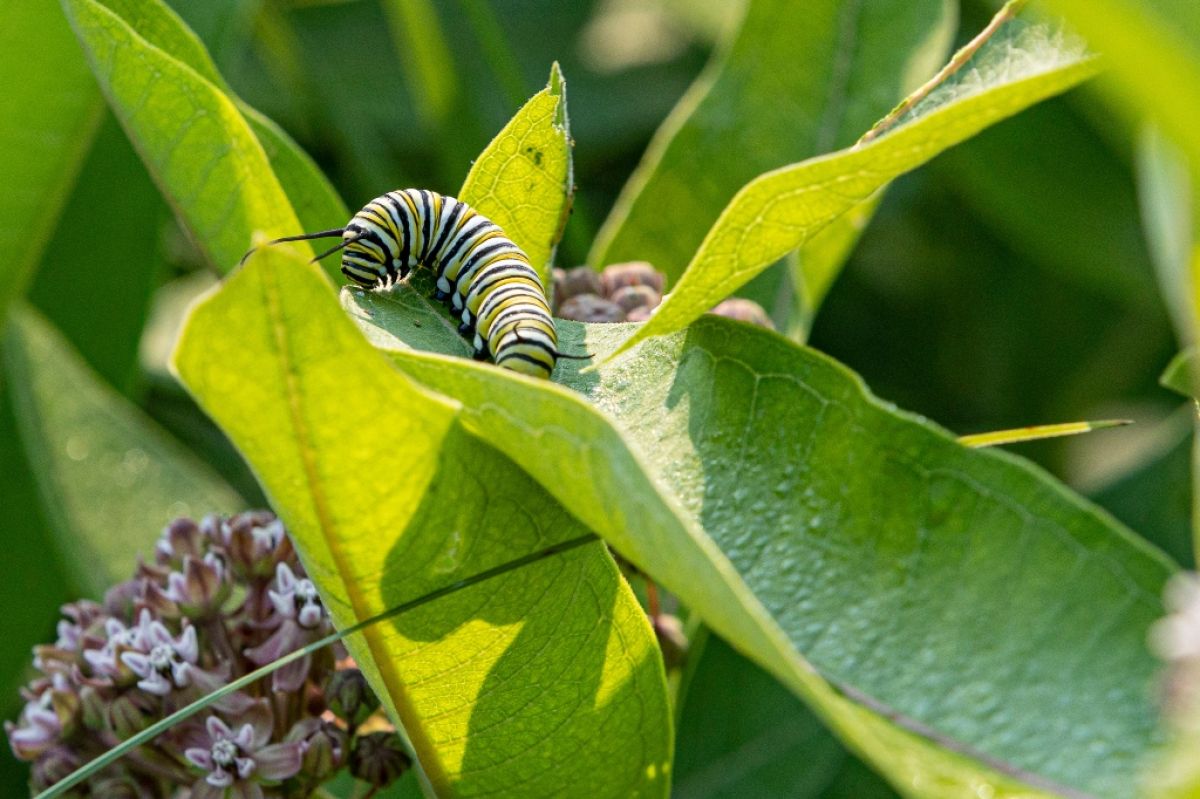Monarch butterflies like to eat various species of milkweed, which have a bitter juice, that makes their caterpillars unappealing to predators.
Common milkweed, once established, has deep spreading roots and lots of seeds. It is hard to get rid of unless it is mowed down repeatedly. So always pull up any new seedlings or transplant them to a perimeter garden or wild area of your yard.
Mine, unfortunately, have self-sowed right in the front of my garden, and so I just chop them back repeatedly to prevent them becoming too tall and gangly. They still attract the monarch caterpillars and are hardy to -50F, so they always winter over.
Although there are 4 stages in the life of butterflies—the egg, the caterpillar, the chrysalis, and the adult butterfly—only the caterpillar and the adult monarch butterfly are attracted to milkweed. The adult butterfly also likes the nectar from goldenrod, thistle, cosmos, lilac, lantana, and butterfly bush.
So, if you grow those plants too, they will stick around in your garden after the caterpillars hatch into adult butterflies.
However, if your plants that attract monarchs are near other plants that are susceptible to pests and you dust with pesticides, even environmentally friendly types, remember that pesticides can drift, and monarch butterflies and their caterpillars are extremely sensitive to them.
This is Moya Andrews, and today we focused on milkweed.










